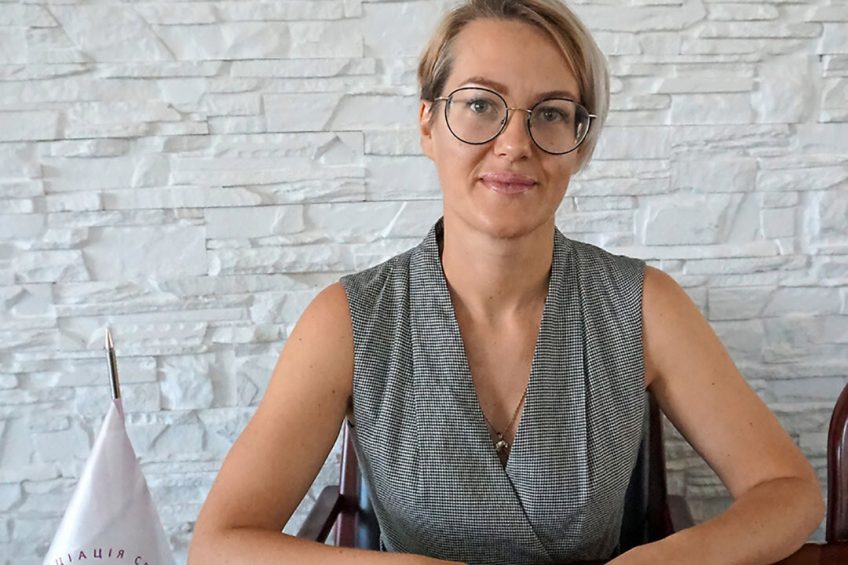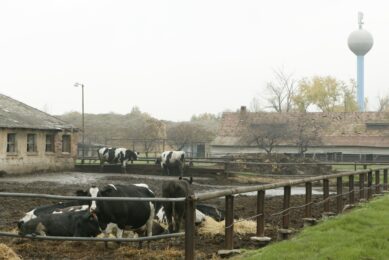Interview: How viruses shaped a new reality for Ukraine

Market situations can differ from country to country; this becomes clear when listening to Oksana Yurchenko, president of the Association of Ukrainian Pig Breeders. Where Covid-19 led to supply chain problems in the US, Ukraine’s commercial production had a different experience.
Long before African Swine Fever (ASF) crossed the borders of Germany, the virus had already emerged in Ukraine. The country has been facing the virus since 2012 and learned the devastating consequences. In recent years, the country’s swine sector has been recovering bit by bit – then a new virus showed up: Covid-19. Oksana Yurchenko, president of the Association of Ukrainian Pig Breeders, maintained a helicopter view and noticed that unlike with ASF, commercial production actually benefited from the later virus.
How has Covid-19 affected Ukraine’s pig sector?
Oksana Yurchenko: “In Ukraine, we have seen two opposite trends in quarantine restrictions related to Covid-19. Backyard farms, whose share in sales is around 42%, have been hit by the closure of their main sales channel – marketplaces. Citizens and small farms that were growing pigs for Easter were unable to sell them.
“For the industrial segment, the closure of marketplaces was beneficial, as customers switched to buying meat in groceries and butchers. Since the number of sales channels narrowed, demand for pork produced by commercial farms went up.
“A positive was that there were no coronavirus outbreaks among employees of farms and meat-processing plants. The supply chain remained undisrupted, so it was able to meet the domestic demand. A US scenario did not seem likely in Ukraine, since we don’t have such big companies, neither in pig farming nor in processing. There is no monopoly in the industry.
“The feed market was also not affected by quarantine restrictions. There were no disruptions in feedstuff supply, at least not related to the Covid-19 pandemic. Today, in Ukraine, due to changing legislation, it is impossible to register new products – procedures are still being detailed.
“Conditions in the pork market are rather comfortable. Since early summer, prices have been ranging between $ 1.60 and $ 1.70 per kilogramme (live weight) thanks to the barbecue season, a reduction in imports in the first half of the previous year and a seasonal decline in output due to lower gains in hot weather.”
How has the industry been developing the past few years?
“The epizootic situation has been the main factor impacting the pig industry, not only for Ukraine. We are talking about ASF. The first outbreak was registered at a backyard farm in 2012. Since 2014, the virus has been registered in the wild and, since 2015, in industrial farms as well. Since the beginning of this year, we have only had 12 ASF outbreaks; nevertheless, industrial farms are still facing high risks. Unlike backyard farms, industrial farms in Ukraine are not being reimbursed in the event of an outbreak and cannot buy insurance for their pig population.
On the one hand, there is an ongoing harmonisation of our legislation with Europe, but to a large extent, old Soviet regulations still exist
“Another negative consequence of the ASF spread is isolation from foreign markets. In the last four years, pork exports have not exceeded 15,000 tonnes. The situation is saved by a shortage of pork on the domestic market; we are not producing as much pork as we consume. And yet, the industry is growing. One day sales will become critical.
“It is also worth mentioning that there is an insufficient legislative base. On the one hand, there is an ongoing harmonisation of our legislation with Europe, but to a large extent, old Soviet regulations still exist, which were never rewritten or adjusted. Production technologies are way more advanced now than those used on Soviet collective farms, yet farmers still need to comply with some regulations approved 50 years ago.”
Ukraine is exporting a lot of poultry but has to import pork. Why is that?
“Import dynamics are hard to predict, as they are always linked to market conditions. High prices on the domestic market are a guarantee that there will be foreign supplies. In the past few years, pork imports amounted to 6% of domestic production; if other pig industry products are also taken into account, that figure amounts to 15.5%. We hope these figures will not change.
“Exports are weak, although the work on opening new markets never stops. Following several years of negotiations, an international veterinary certificate on pork exports to Singapore is now in the final stage of approval.
“To expand the list of export markets in the context of the continuing ASF spread, the Association of Ukrainian Pig Breeders and the Food and Agriculture Organization (FAO) have developed a legislative base for compartmentalisation. European countries apply the zoning principle, but in Ukraine, ASF was registered in every region. The compartment status is granted to companies that can prove that their biosecurity systems (for farms) or traceability system (for meat-processing plants) is top level. This means that irrespective of the epizootic situation in the country, their products are safe and have good quality. So far, no companies in Ukraine have achieved that status; work is still ongoing.”
How do you see the future of backyard farms?
“Pig breeding in Ukraine is a traditional job for the rural population, not only for personal consumption but also to sell the meat. Nevertheless, in the past few years, the pig population in this segment has shrunk by 7.5% per year on average. In 2015, we had 3.6 million pigs in backyard farms; in 2020, we have only 2.43 million head.
“This trend is a consequence of urbanisation, labour migration and ASF. Besides, these days people pay more attention to economics. Resources and labour are not paying for themselves.
“A prohibition on selling meat slaughtered at home, to come into force in 2025, could be another key factor to accelerate the negative dynamics. From the point of view of product safety, this is the right decision. And yet, it is also complex due to the social aspect.”
ASF and the conditions of doing business in Ukraine are scaring many investors away
How would you describe the industry’s investment attractiveness?
“Over the last few years, the pig breeding business in Ukraine has been relatively marginal. Alongside the rather effective market players whose profitability is sky-high, there are weaker companies operating with zero profitability or even suffering losses. In terms of production costs, Ukraine’s companies are not able to compete with US and Brazilian farmers. However, the production cost level of Ukrainian farms is similar to that of their European colleagues.
“Internal investors are ready to develop the pig business. According to an opinion poll conducted by the Association of Ukrainian Pig Breeders earlier this year, out of the 100 biggest companies, which jointly keep 2.3 million head of pigs or 71% of the industrial pig population, more than half expressed their readiness and desire to invest in expanding production capacities soon.
“Foreign investors are more careful. ASF and the conditions of doing business in Ukraine are scaring many away. But we do have quite a few successful projects as well. For example, there is a company with Danish investments. Its share of the country’s industrial pork production is 13%.
How successful has Ukraine been in tackling ASF?
“The number of outbreaks fell, after a peak of 163 cases in 2017, to 145 cases in 2018, 53 in 2019, and 12 in 2020. That is linked to the Covid-19 pandemic, as both human and transport movements have largely been restricted.
“The main obstacle in fighting ASF is the absence of a comprehensive pig identification system in backyard farms. This means that animals are grown without any control by veterinary services, and their transportation is not subjected to control either. Consequently, in the event of an ASF outbreak occurrence, it will be hard to deal with it effectively. A legislative framework and a system of penalties is currently being developed. However, given the social aspect, it is hard to build that system.”
What changes do you expect to see in the future?
“Before the 2014 crisis, pork consumption in Ukraine was growing, from 14.2kg per capita (18kg, if other pig industry products are taken into account) to 17.8kg (21.3kg) in 2013. Over the past five years, we have seen positive dynamics again, so consumption reached 14.85kg (18.2kg) in 2019.
“Numerous factors will influence the further dynamics of pork consumption in Ukraine. The main one is the general economic situation in the country. Nowadays, customers are closely following product safety, quality, production conditions and taste parameters. The task of pig farmers is to prove that their products meet all the necessary criteria. Together with the FAO, we are working on developing industry standards on growing pork without antibiotics. This will be our first step towards consumers and definitely not the last one. The industry’s future is determined by demand, and in the modern world, we need to compete for customers.”











